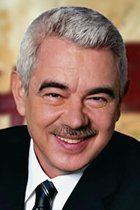16 November 2003 2006 → 6 March 1999 7 January 2002 52 seats, 37.9% 56 seats, 37.7% | Registered 5,307,837 0.3% 7 January 2002 25 November 1996 | |
 | ||
Turnout 3,319,276 (62.5%)
3.3 pp | ||
The 2003 Catalan parliamentary election was held on Sunday, 16 November 2003, to elect the 7th Parliament of Catalonia, the regional legislature of the Spanish autonomous community of Catalonia. At stake were all 135 seats in the Parliament, determining the President of Catalonia.
Contents
This election marked a change for all Catalan political parties due to Catalan President Jordi Pujol's decision not to seek a seventh term in office and to retire from active politics. The election results were a great disappointment for Pasqual Maragall's Socialists' Party of Catalonia, which again saw Convergence and Union winning a plurality of seats despite them winning the most votes by a margin of just 0.3%. Opinion polls earlier in the year had predicted a much larger victory for Maragall, but his lead over CiU had begun to narrow as the election grew nearer. ERC was the perceived true victor of the election, doubling its 1999 figures and scoring the best results in its recent history, both in terms of seats (23 of 135) and votes (16.4%), up from 11 seats and 8.7%.
As Pujol's successor Artur Mas did not won a majority large enough to renew his party pact with the People's Party of Catalonia, which had kept Pujol in power since 1995, an alliance between the Socialists' Party of Catalonia, Republican Left of Catalonia and Initiative for Catalonia Greens–United and Alternative Left resulted in the Catalan tripartite government. Ironically, despite losing 10 seats and 150,000 votes respect to the 1999 election, Maragall became the first center-left President of Catalonia, ending with 23 years of Convergence and Union government.
Electoral system
The 135 members of the Parliament of Catalonia were elected in 4 multi-member districts, corresponding to Catalonia's four provinces, using the D'Hondt method and a closed-list proportional representation. As the community did not have an electoral law of its own passed into law at the time of the 2003 election, the electoral system came regulated under the community's Statute of Autonomy rules, and subsidiarily, under the Spanish general electoral law (Organic Law 5/1985, of the General Electoral Regime). As a result of the lack of an autonomous electoral law, seats were allocated to districts through specific Laws or Decrees for each election. For the 2003 election, seats were distributed as follows: Barcelona (85), Girona (17), Lleida (15) and Tarragona (18).
Voting was on the basis of universal suffrage in a secret ballot. Only lists polling above 3% of valid votes in each district (which includes blank ballots—for none of the above) were entitled to enter the seat distribution.
Background
The retirement of Jordi Pujol as CiU candidate paved the way for Artur Mas, then Chief Counsellor (Conseller en cap, akin to a Vice-president; he was known colloquially as the Dauphin), as the culmination of a long successory process.
In 1999, because of the PSC growth, Convergence and Union had lost the vote share for the first time, but had won the most seats due to the disproportionate allocation of seats in Girona, Lleida and Tarragona respect to Barcelona. Thanks to the support of the PPC, Pujol had been able to be re-elected to a sixth term in office. In spite of this, and despite Pujol's approval ratings remaining high, rumours about his possible retirement and a desire for change had resulted in CiU trailing the PSC in opinion polls for the entire legislature, with a lead nearly into the double digits by mid-to-late 2002. From mid-2003, however, the Socialist lead had begun to narrow to the point that speculation arose about a possible reenactment of the 1999 results.
ERC was in almost constant growth since the 1988 election, and had become a political force able to break through the dominant two-party system in Catalonia.
Initiative for Catalonia Greens and United and Alternative Left had run separately in the previous election, but ran together in a party coalition for this election.
Parties
Vote
Poll results are listed in the table below in reverse chronological order, showing the most recent first, and using the date the survey's fieldwork was done, as opposed to the date of publication. If such date is unknown, the date of publication is given instead. The highest percentage figure in each polling survey is displayed in bold, and the background shaded in the leading party's colour. In the instance that there is a tie, then no figure is shaded. The lead column on the right shows the percentage-point difference between the two parties with the highest figures. When a specific poll does not show a data figure for a party, the party's cell corresponding to that poll is shown empty.
Seat projections
Opinion polls showing seat projections are displayed in the table below. The highest seat figures in each polling survey have their background shaded in the leading party's colour. In the instance that there is a tie, then no figure is shaded. 68 seats were required for an absolute majority in the Parliament of Catalonia.
